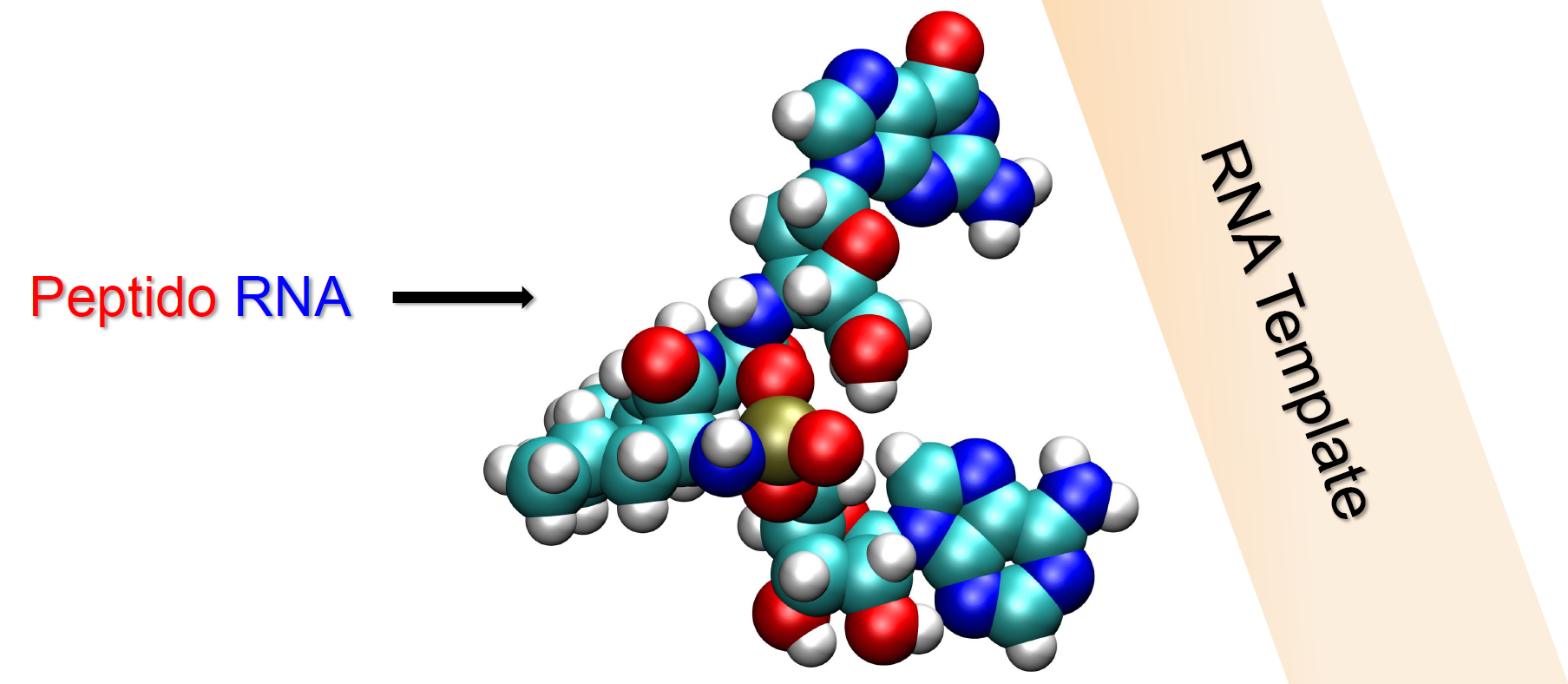Templates direct the sequence-specific anchoring of the C-terminus of peptido RNAs
B. Jash, and C. Richert 2020 Chemical Science https://doi.org/10.1039/C9SC05958J
02.03.2020
B. Jash and C. Richert
Chemical Science https://doi.org/10.1039/C9SC05958J
Abstract
 When amino acids and ribonucleotides react in aqueous condensation buffer, they form peptido RNA with a phosphoramidate bond between the N-terminus of the peptide and the 5′-terminal phosphate of a ribonucleotide. If peptido RNA was the product of spontaneous reactions of amino acids and nucleotides, there must have been a transition to peptidyl tRNAs, where the C-terminus of the peptide is ester-linked to the 2′,3′-terminus of an oligonucleotide. Here we report how short peptido RNAs react with the 3′-terminus of oligodeoxynucleotides, templated by RNA strands. In our model system, the rate and yield of the anchoring of the C-terminus of the dipeptido dinucleotides to an amino group was found to depend on the sequence of the peptide, the 5′-terminal nucleotide of the dinucleotide and the RNA template. In all cases tested, highest yields were found for dinucleotides hybridizing next to the primer terminus. For the most reactive species, GlyPro-AA, anchoring yields ranged from 8–99%, depending on the template. When LeuLeu-AA, PhePhe-AA and GlyGly-AA were allowed to compete for anchoring on 3′-UUC-5′ as templating sequence, they gave a product ratio of 1 : 2 : 6, and this selectivity was almost independent of the terminal base of the primer. Our results show the control that a simple duplex context has over the covalent anchoring of peptido RNAs at a position known from peptidyl tRNAs. Processes of this type may have bridged the gap between untemplated condensation reactions and the highly specific processes of ribosomal protein synthesis.
When amino acids and ribonucleotides react in aqueous condensation buffer, they form peptido RNA with a phosphoramidate bond between the N-terminus of the peptide and the 5′-terminal phosphate of a ribonucleotide. If peptido RNA was the product of spontaneous reactions of amino acids and nucleotides, there must have been a transition to peptidyl tRNAs, where the C-terminus of the peptide is ester-linked to the 2′,3′-terminus of an oligonucleotide. Here we report how short peptido RNAs react with the 3′-terminus of oligodeoxynucleotides, templated by RNA strands. In our model system, the rate and yield of the anchoring of the C-terminus of the dipeptido dinucleotides to an amino group was found to depend on the sequence of the peptide, the 5′-terminal nucleotide of the dinucleotide and the RNA template. In all cases tested, highest yields were found for dinucleotides hybridizing next to the primer terminus. For the most reactive species, GlyPro-AA, anchoring yields ranged from 8–99%, depending on the template. When LeuLeu-AA, PhePhe-AA and GlyGly-AA were allowed to compete for anchoring on 3′-UUC-5′ as templating sequence, they gave a product ratio of 1 : 2 : 6, and this selectivity was almost independent of the terminal base of the primer. Our results show the control that a simple duplex context has over the covalent anchoring of peptido RNAs at a position known from peptidyl tRNAs. Processes of this type may have bridged the gap between untemplated condensation reactions and the highly specific processes of ribosomal protein synthesis.

